When Mexican entrepreneurs and financiers Pablo Carmona and Joshua Kremer, co-founders of Paradero Hotels, met through mutual friends while skiing in Vail, Colorado, everything clicked. “The first day we met, an hour into dinner, we knew we were going to create something together,” Carmona said. Fast-forward five years to February 2021, and their shared work ethic, passion for Mexican culture and counterbalance of skills synergized into the 35-suite Paradero Todos Santos in Baja California Sur, Mexico, an “experience-inclusive” destination rooted in meaningful connections with nature, sustainability, community development, and conservation.
Contributed by Alicia Sheber
From Pacific surf sessions to hands-on tutorials with biodynamic farmers to taco tours to shamanic temazcal ceremonies in a clay sweat lodge, adventures like these encourage longer stays because they’re included in the room rate.
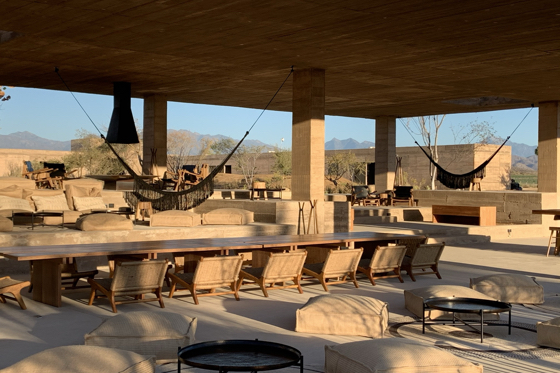
While the Baja Peninsula is popular with Americans accustomed to Tex-Mex pastiche back home, Paradero Todos Santos tells the country’s real story. During these first months, 70% of guests were mostly from the United States, Europe and South America, with the balance from Mexico. Carmona said the hotel represents “a way to value what we have in abundance but can be taken for granted.” And what a treasure it is: the artsy village of Todos Santos is a UNESCO-designated biosphere reserve with five landscapes in a temperate climate: desert, mountains, beaches, oasis and farmland.
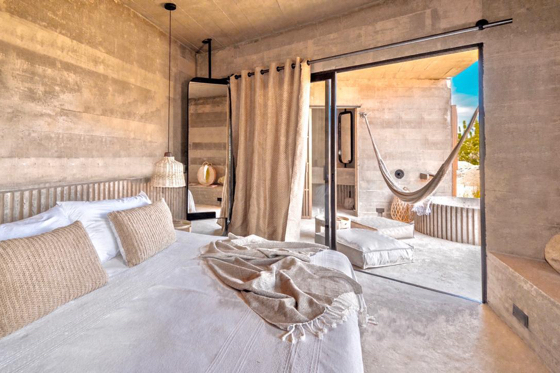
Hotels where landscape architecture is top priority are rare. Wisely, Kremer and Carmona embraced the opportunity and, after a one-year vetting process, commissioned the design team. “We pushed them to create a cohesive story with landscaping in the rooms and FF&E in the exterior,” Kremer said.
Mexico City-based landscape architect Polen developed the masterplan, which resulted in an 80% landscape/20% construction site featuring a 100,000-square-foot botanical garden with 80 endemic species, including 100-year-old Cardón cacti and 20,000 plants cultivated for maximum growth and vitality.
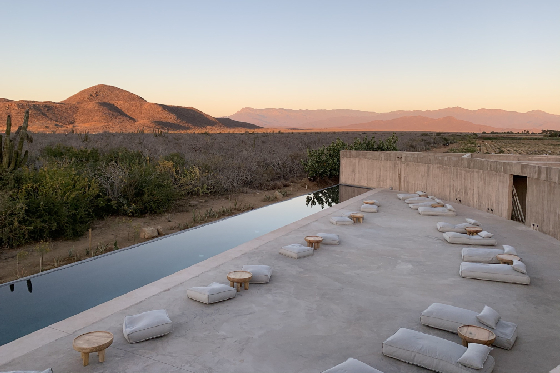
Mexican-Swiss architecture firm Yektajo & Valdez conceived the brutalist concrete and Tornillo timber structure, while Guadalajara, Mexico-based B Huber designed interiors with Mexican-made materials in unvarnished natural forms, tones and textures that let the terrain become the rightful star.
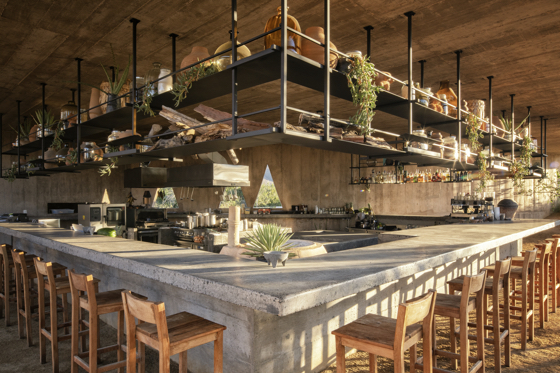
The team visited numerous artisans in Guadalajara and Oaxaca, Mexico, to source FF&E elements. Many had lost all business due to the pandemic. “We met an incredible man who made some of the best Oaxacan blankets,” Kremer said, “and when he won the contract to supply them all, including those for the retail shop, he cried.”
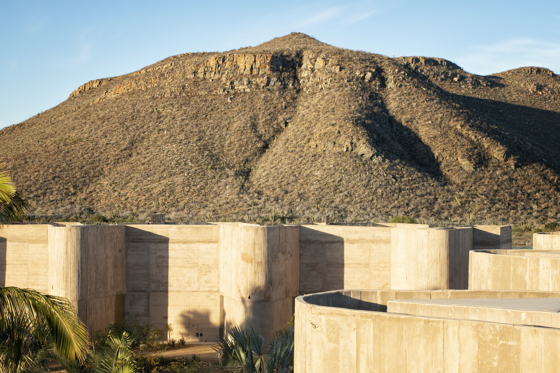
This desire for personal connection and improving the lives of small-to-medium family businesses is what drives Paradero. Although the duo is evaluating opportunities for additional locations, fine-tuning Todos Santos is their current priority. “The experience-inclusive model has exceeded our guests’ expectations because it lets them make real connections with others that last after they go home,” Carmona said. With an ethos of creating sustainable communities, any destination would be lucky to have a Paradero on its doorstep.
